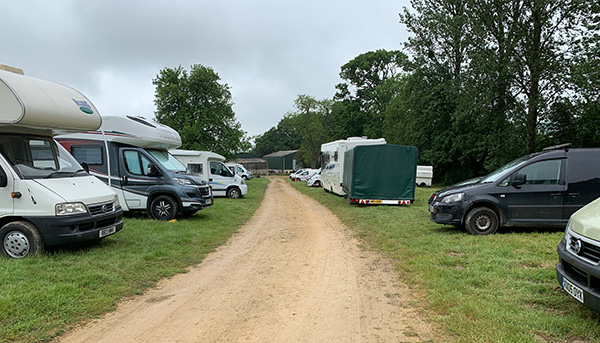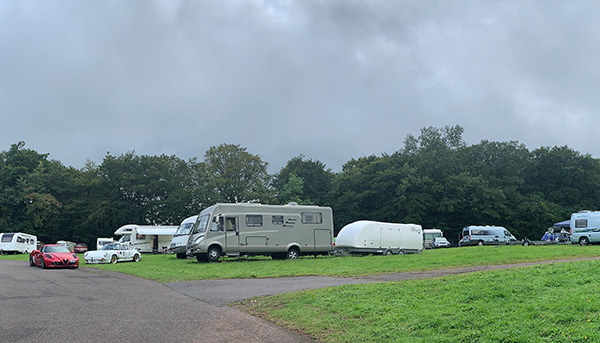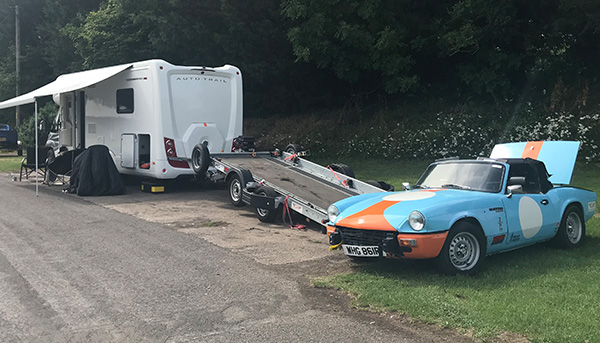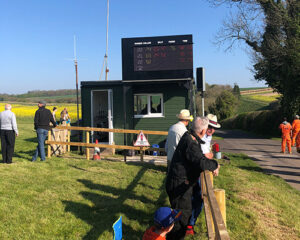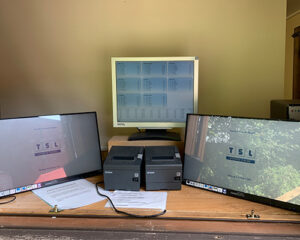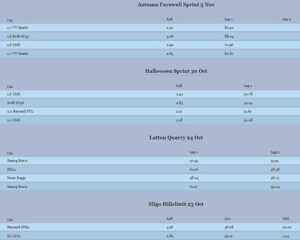Back in 2019 it was suggested I should take my Triumph Spitfire on a hill climb but at that stage it was a road going ‘Sunday afternoon’ social car and I remember how confusing it was wresting with all the potential specification and organising details to give it a go. It seemed that other guides were written by the most experienced competitors and tried to cover all the if’s but’s and maybe’s of every type of car and event. So this is written after just a single season of competition in Hill Climbing and sprinting and is therefore deliberately written as a most basic first read if you should want to take your ‘daily drive’ onto a track someday.
Attending your first speed event:
Speed events are where cars race one at a time against the clock from a standing start through to a flying finish. There are two main types of speed events:
Hill climb: Cars are timed as they drive along a (often very narrow) tarmac course where the finish line is higher than the start.
Sprint: Cars are timed as they drive on a tarmac track (often a full-size race circuit).
These notes only apply to Hill Climb and Sprint disciplines and assumes you will be using a road legal, completely standard, mass produced 2-wheel drive car with current tax, MOT and insurance – then it will fall into one of 2 categories:
Standard class: this is your class if your car has a first registration newer than 2000 and an engine capacity of less than 2L.
Roadcar class: this is your class if your car does not meet the above restrictions.
Vehicle requirements:
Vehicle must be in good overall condition
Have an indication to show which way to turn the ignition key to turn it off
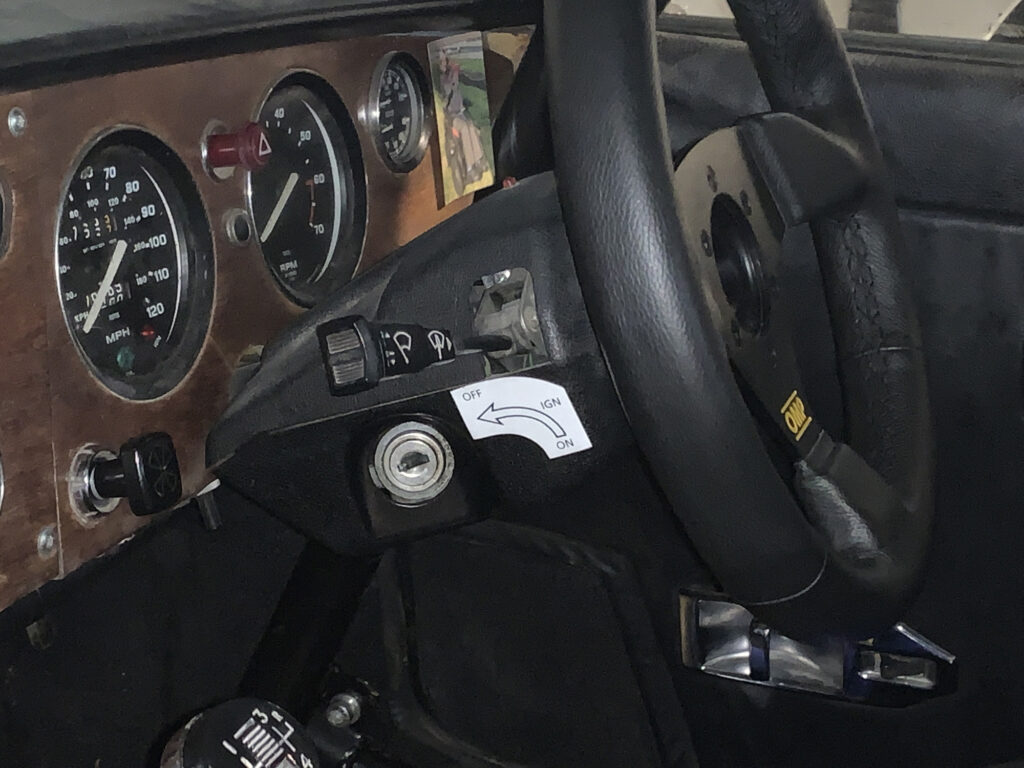
Have a yellow battery earth cable or mark the earth cable with yellow tape
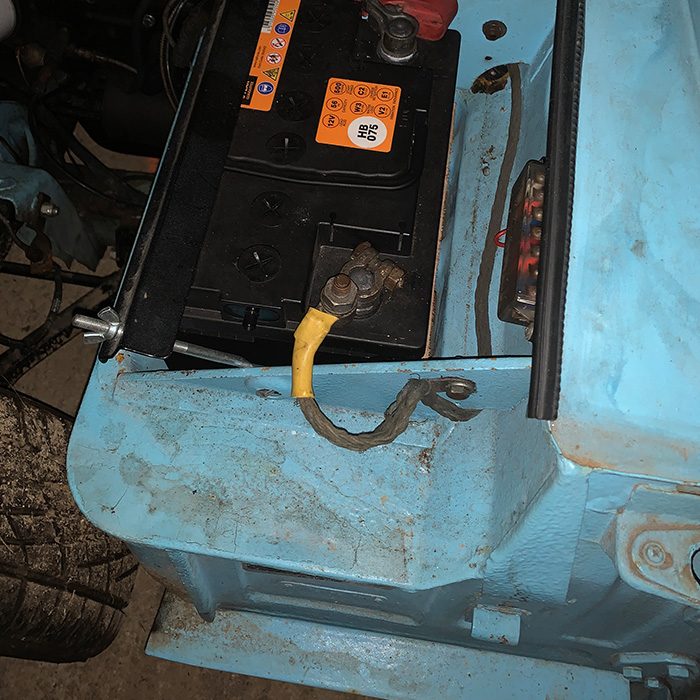
Have your race numbers clearly visible on both sides of the car

Have a timing strut of the correct dimensions affixed to the front of the vehicle
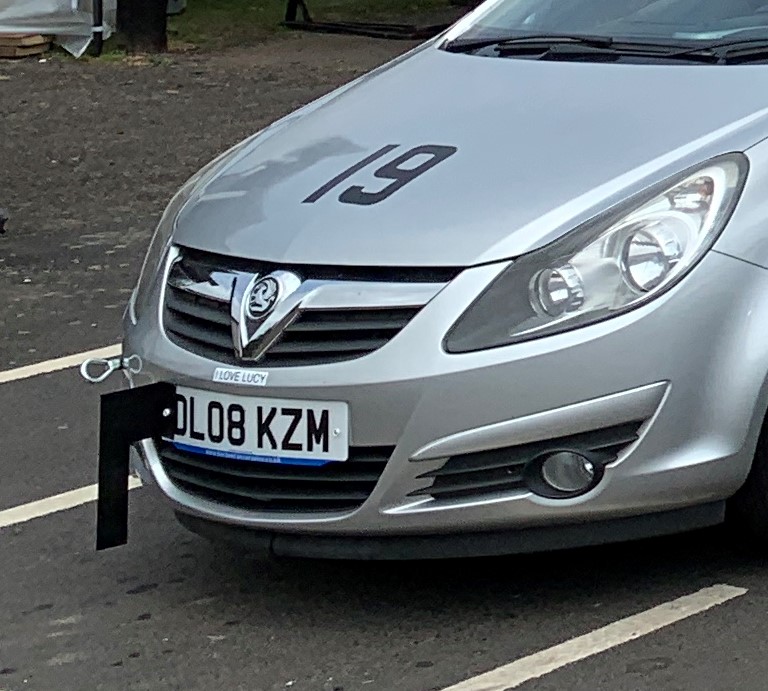
To the front and rear of the car you must have clearly identified and easily accessible towing points. This is normally just a case of fitting the towing eyes that came with the car and using an arrow on a sticker to point them out.
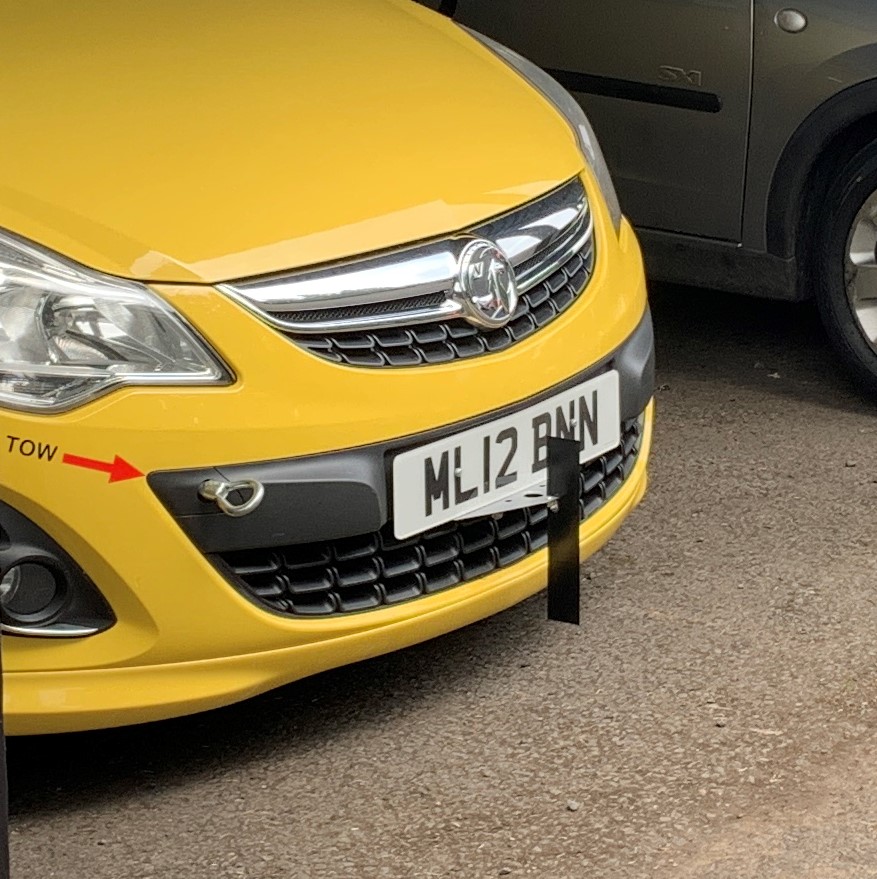
Personal safety clothing and equipment required:
In standard class: you only need a helmet to the MSUK approved standard (Full face helmet for open top vehicles, although open face helmet may be used in hard top cars). Your clothing must cover arms and legs.
In roadcar class: then you must also wear overalls to the MSUK approved standard. The answer to anything else you need is ‘it depends’!
When asked, the answer according to MSUK, is that Gloves, Boots, Balaclavas, H.A.N.S devices etc are all recommended but are not compulsory. However, and this advice will often be repeated, all events will have their own regulations, so the track or the organising club, will give the answer to these questions in their published regulations which are specific for that single event.
Vehicle safety set-up and equipment: Assuming a completely standard vehicle, then there is no need for the car to have any harnesses, safety cages, fire extinguishers, or any other specialist equipment whilst running in these classes.
Eligibility:
You must be a member of a MSUK recognised club
e.g.
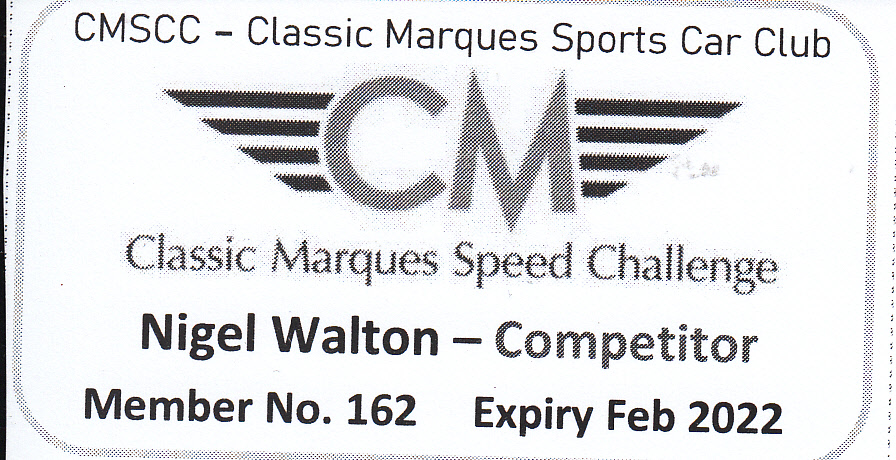
You will have to do some research to find a club that fits with your vehicle type and geographically where you want to be focussed. Some clubs will be based on using the same venue; whilst some will offer events on a regional or nationwide list, and some will only want to attract a certain brand or class of vehicle.
You must have a competition licence – You do not need to pass a test for this – just apply to MSUK for an RS Inter club licence
e.g.
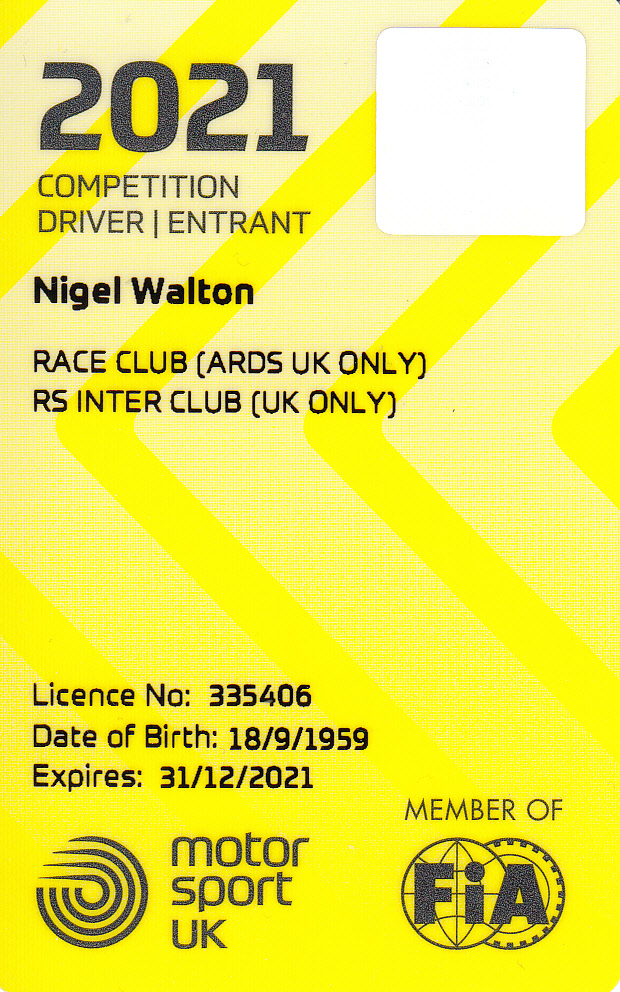
Some events can be entered as a one off or you can join a championship to compete by accumulating points at a number of pre-determined events
The structure of an event:
Your club/championship will provide a list of qualifying events
e.g.
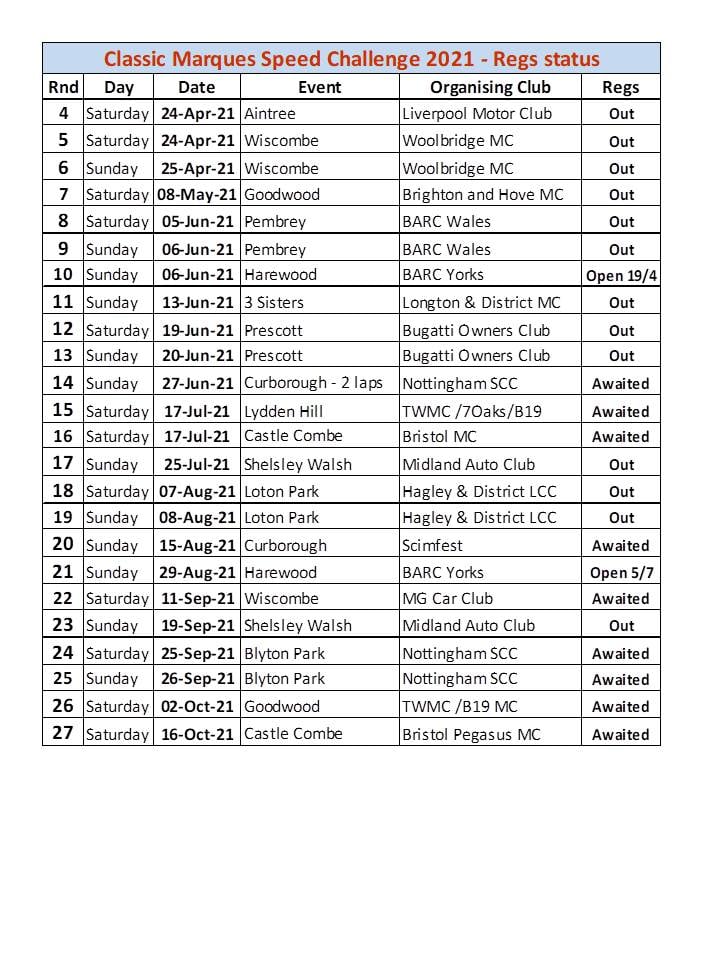
Even if you are entered in a championship, you must still pro-actively enter each event separately
There will be an organising club for each event who will hire the circuit.
The organising club will issue invitations to their own club members and members of other selected clubs / championships asking drivers to register for the event.
You can only apply to compete at an event if your club/championship has been invited.
But (subject to the car you are using?) if you want to enter specific events then there is no problem with joining multiple clubs. Sharing a car between 2 drivers is allowed but 1 driver is not allowed to drive 2 cars at the same event.
You can find out when an event is open via the organising club web sites or your own club communications (note that they will not necessarily be released in chronological order).
The organising club will issue the regulations setting out the plan for the event, including the minimum and maximum no of cars that can take part.
There is no standard form or system for joining an event so read the regs carefully.
Apply in the correct manner for an event, but your entry is rarely confirmed at this point even though you may be asked to pay at this stage.
An event can be over-subscribed with a waiting list of reserves.
Some events are on a first come, first served acceptance, some events put their own club members first, sometimes acceptance can be influenced by the car you are entering or the championship you are competing in.
At some point you should receive confirmation that your entry has been accepted – and how to pay if not already done, – but if not acknowledged to you individually then 1-2 weeks before the event the confirmed entry list will be published.
Supplementary regs (SR’s) will also be issued with amendments and final details, such as paddock plan, running order, timings for the day, scrutineering and driver sign on instructions, etc.
Scrutineering and signing on:
To ensure your car meets the required regulations it will need to be scrutineered – this will normally be done once at the start of the event, by an authorised official of the organising club. The SR’s/final instructions will let you know what time frame will be used and you will also be told if it will be with you waiting in your paddock place, or if you need to take your car to a scrutineering hut or bay. You should ensure that prior to meeting with the scrutineer that your car is prepared to the exact condition that you will be using it on track, including the timing strut, tow hooks, battery terminal, ignition sticker – but also removing items from the boot and removing / securing any loose items from inside the car. The scrutineer will also check your personal safety equipment so have your helmet, gloves, and suit to hand.
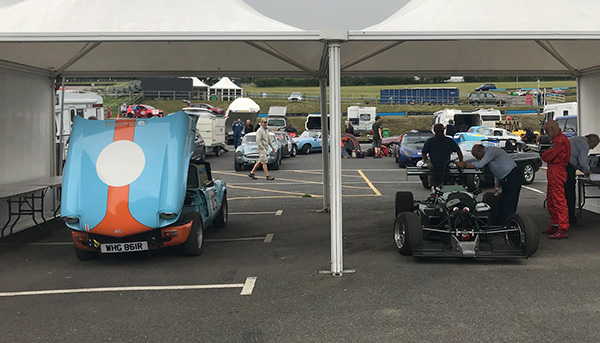
Physical Scrutineering or an on-line declaration is also needed for your personal safety equipment.
It is a similar situation with the drivers signing on procedure; pre COVID you attended the site and on the morning of the event you queued up to present your licence and sign on, however this is now routinely being done on-line and again is subject to deadlines prior to the event.
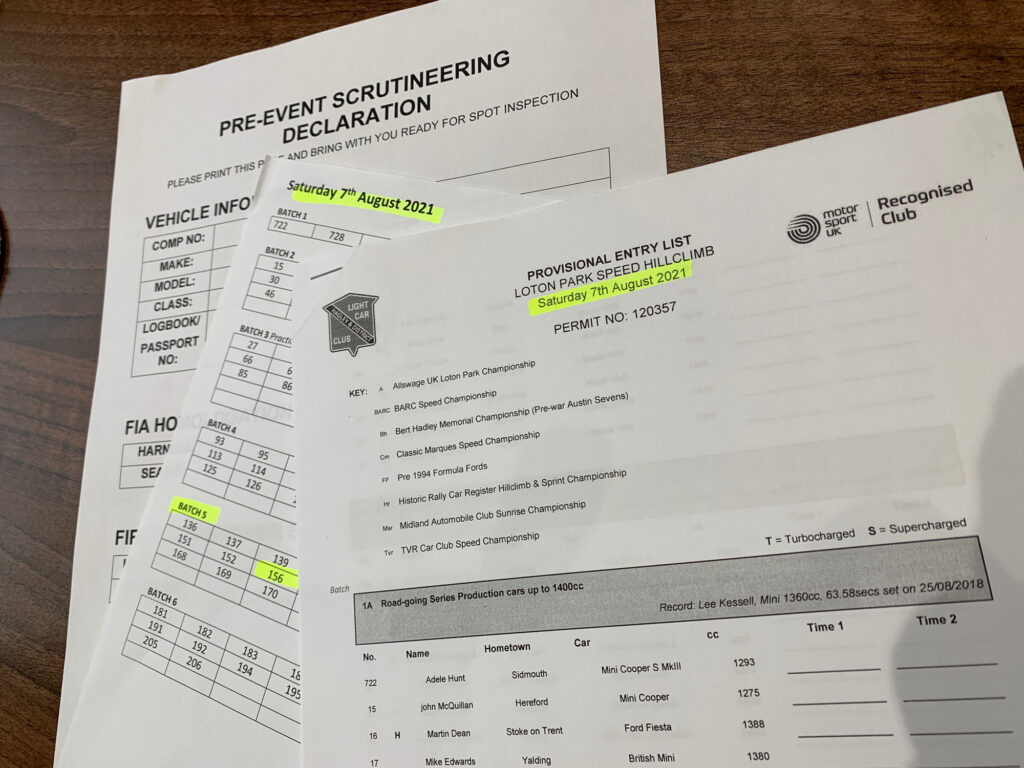
Be careful of the procedures and deadlines for getting on-line paperwork submitted as there is no standard format and so this may differ for each event – but will be listed in the SR’s.
Always take your licence and physical copies of your vehicle’s current insurance MOT & tax status to each event as checks may be carried out.
Always read the regs and the later supplementary regs very carefully as they will differ for each event and will include what Marshall flags will be in operation and other safety details, your position in the paddock, running order, and importantly what your race number will be for the day (you should expect that you will have a different number for each event). Note you must supply and fit your own numbers and they will not normally be available to buy at the track.
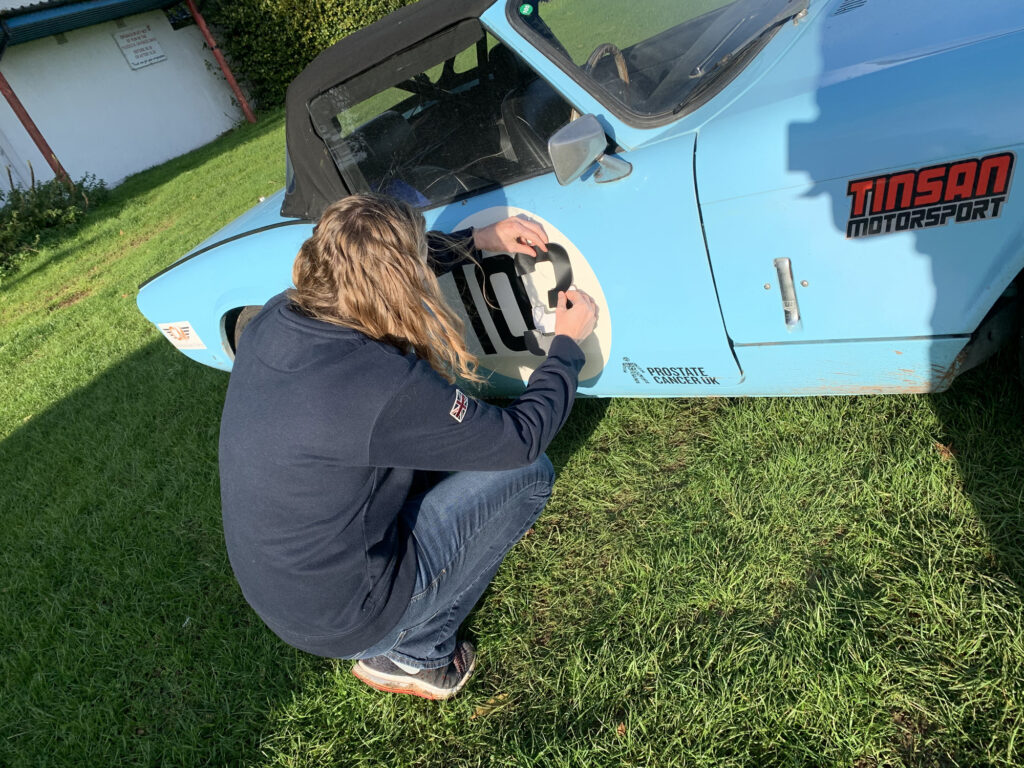
At some point before going out on track you will be expected to attend a drivers’ briefing that will detail how the event will run on the day; pre covid this was done as a group in the paddock, on the morning of the event. However now it may be in written form as part of the regs, or as an online video conference, or other means, but expect that you will have to give a positive confirmation that you have ‘attended’. A physical meeting on the morning may still be used for drivers that have not driven that track before.
The night before/arrival/end of day
Very approximately, activities will start up around 7.30ish in the morning and should be concluded by 5-6pm in the evening.
Travel and accommodation arrangements is very individual and there is no standard expectation: you can drive direct to the event in the morning; stay overnight in locally booked accommodation or use your own vehicles and equipment to camp overnight at the event where allowed.
The earliest arrival time for the day before and/or the gate opening times for the event day will be in the SR’s.
The SR’s will normally say if you can camp overnight at the track the night before the event and if there is any charge. If camping, you should expect to be self-sufficient because although there will normally be some type of basic toilet facilities on site you should not expect electric hook up, showers, shops, or cafes etc. Also, the ground conditions will vary greatly – it can be a very rough grass area on the side of a hill, a level and well-kept grass area, gravel, or tarmac; it may have allocated spaces or simply be an open area.
It is highly unlikely that you can stay on site overnight following the event.
Many SR’s will include a paddock plan; often, but not always, with numbered spaces, showing where to position your competition car and if applicable where the camping area is.
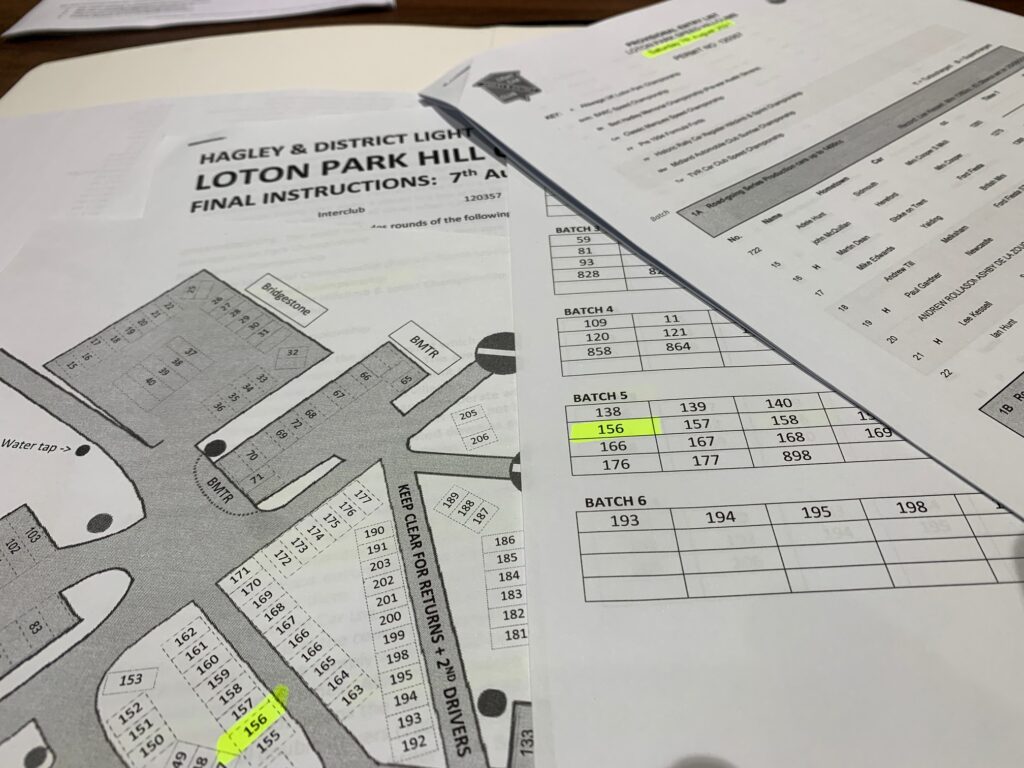
Depending on the layout; the Motorhome, support vehicle, trailers etc may be able to stay with the car in the paddock or you may have to remove them into designated separate areas.
The event day
e.g.
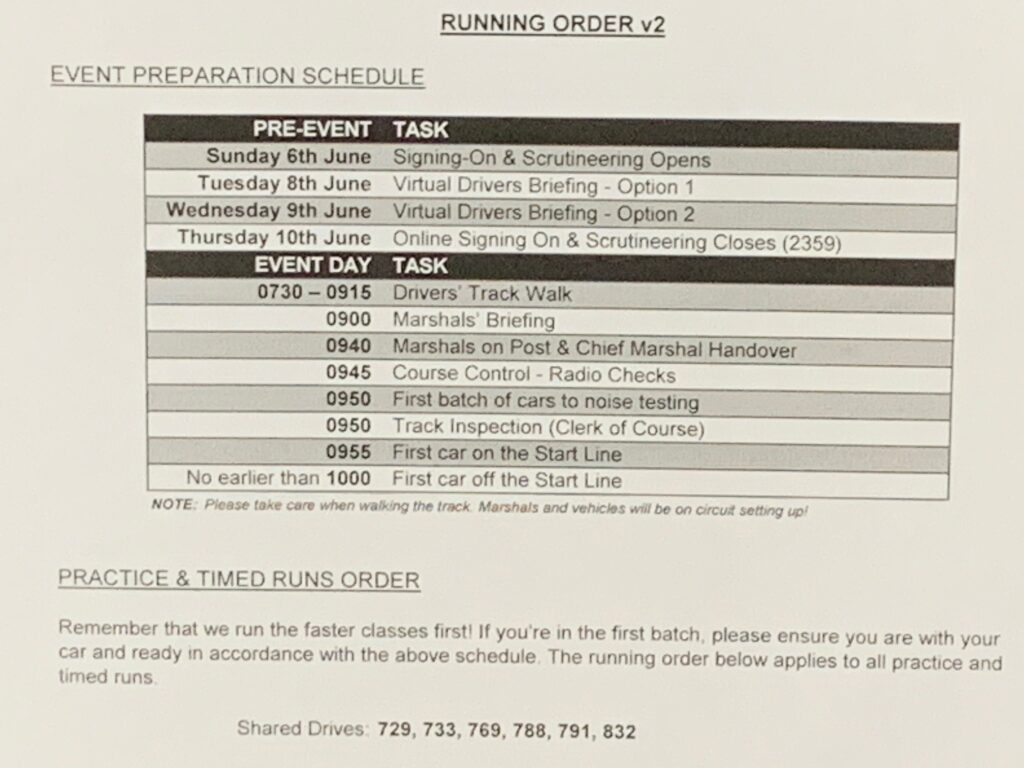
It is usual for drivers to walk the course prior to driving the track, and the window of opportunity to do this will be in the SR’s.
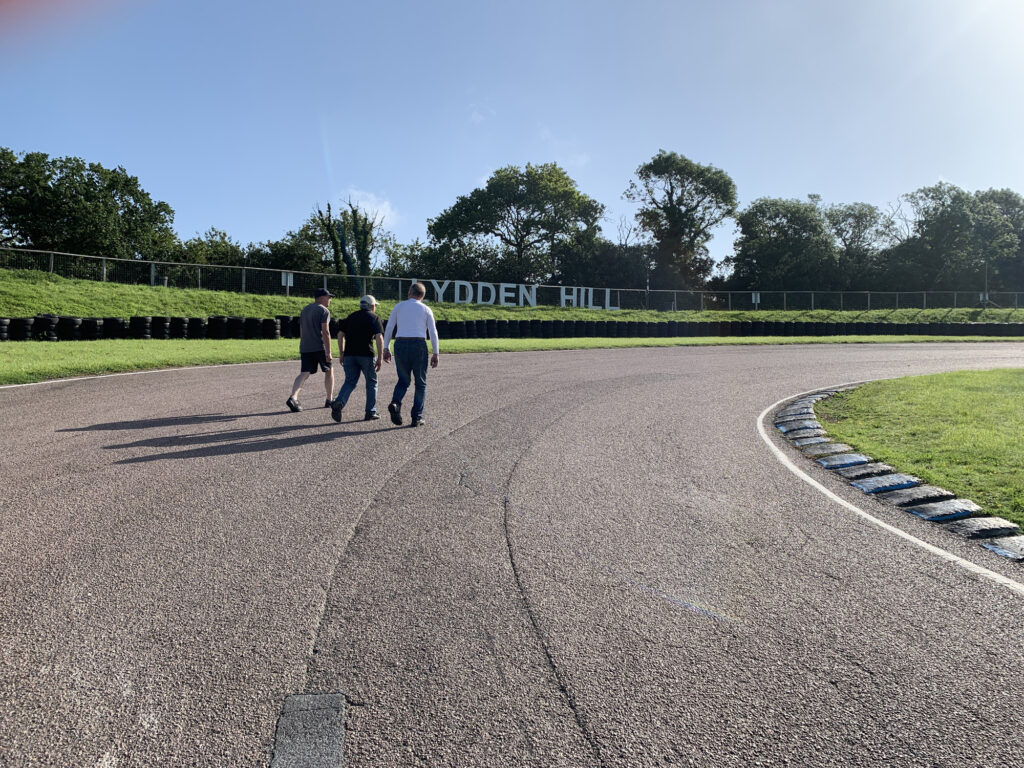
Be prepared for car & equipment scrutineering, which may mean driving to a designated area or most often an official will approach you in your paddock space.
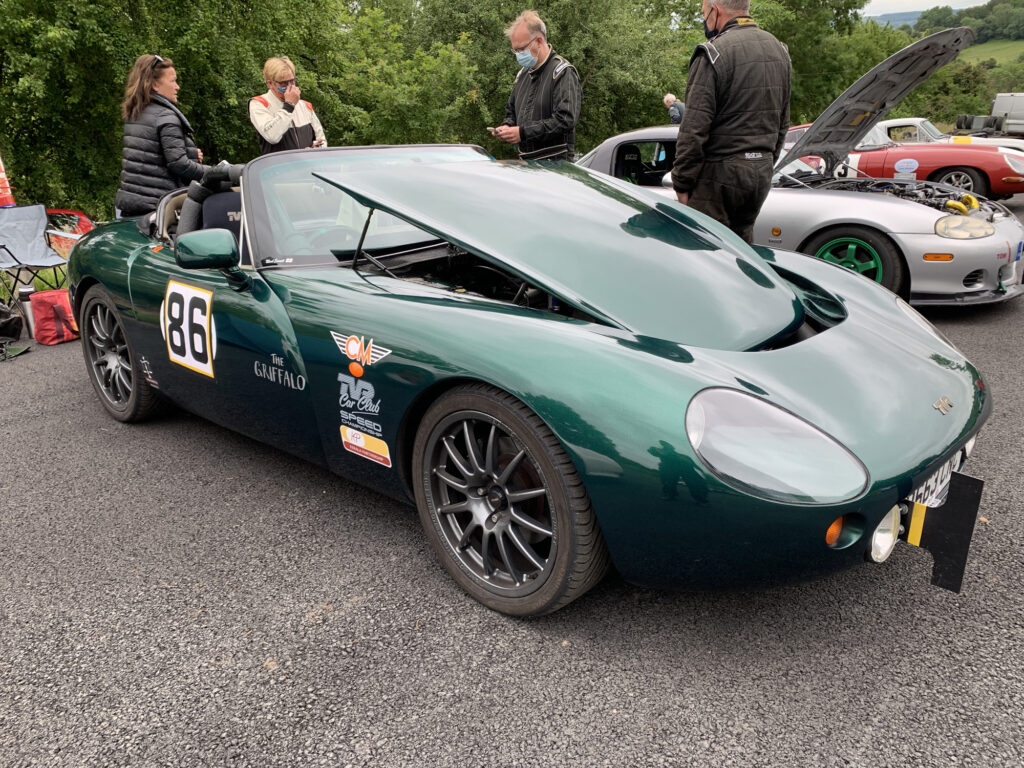
Referring to the running order in the SR’s – you may be called forward in batches or individually. You may go direct to a start line queue, or you may need to move and be held in a staging area first.
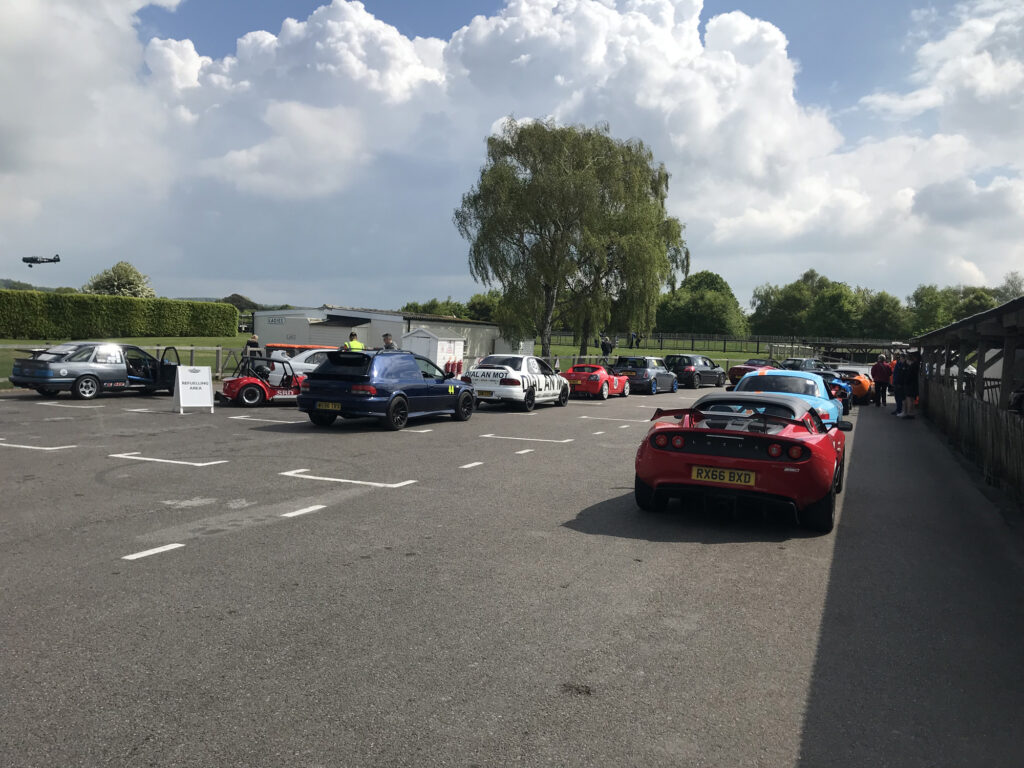
There may be a PA system in place, but this can rarely be relied upon (especially when wearing a helmet), so the best way to know when to start getting ready is to monitor the movement of the cars which are ahead of you in the running order.
Be ready with your car checks done, timing strut in place, numbers displayed, engine warmed up, and safety gear on, but only move from your paddock space in turn and at the appropriate time.
It is normal for there to be a paddock Marshall who will indicate when this is the right time. It can be a good idea to approach them and explain that you are new so they can explain what movements you are expected to make, and I have always found that they will then make sure they help you with very clear signals.
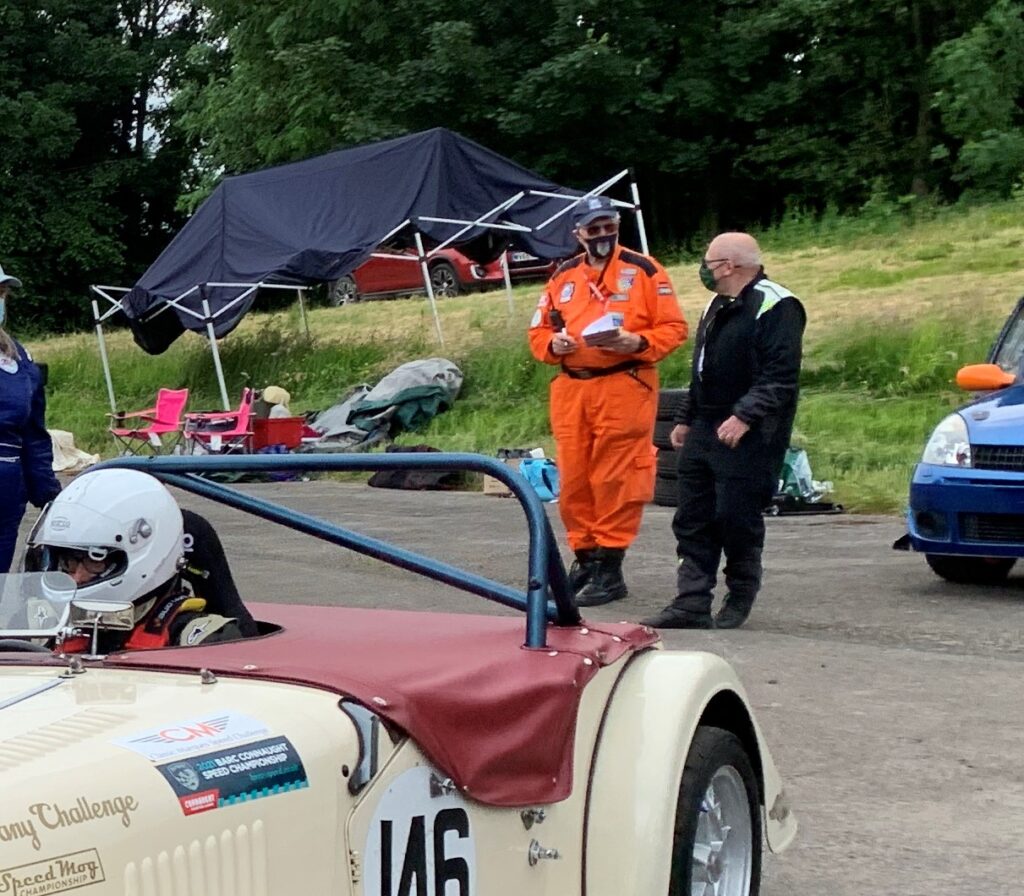
Note that there is no qualifying for pole position or any other routine way to influence the running order and your place in the running order will not normally change during the day.
During your first approach to the start line you should expect the marshals to conduct a noise test by placing a microphone near your exhaust and ask you to rev the car to 2/3rds of the max for a few seconds. The maximum DB limit can differ from track to track but if you are running a standard road car in good condition it should never be a problem.
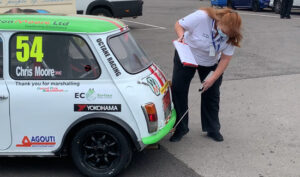
Your car will need to be very accurately positioned at the start line; so, when called forward assume that the marshals will manually move your car the last few inches so keep it out of gear and stay off the brakes!
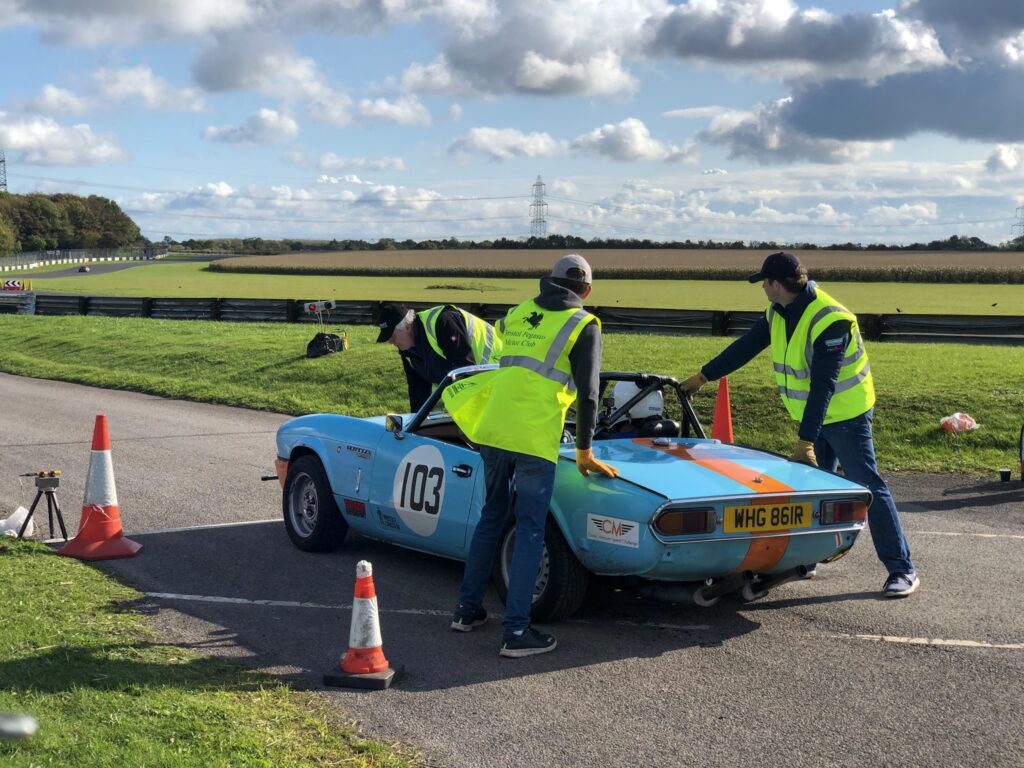
Just forward from the starting position you can expect to see a red light to hold you in place. The light will go to green to indicate that the track is cleared for your run – but note that timing will only start when you move forward to break the beam, so it is OK to take a second or two (max 5 seconds) before launching.
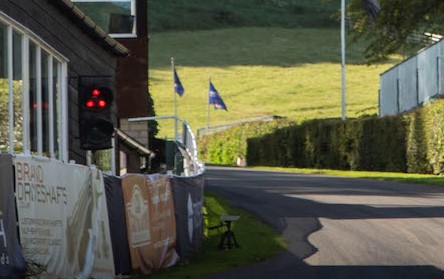
The SR’s will indicate the format for the runs – typically there will be 2 practice runs and 2 timed runs, but recently, some events have moved on to having only 1 practice run and 3 timed runs. If there is time left after the scheduled runs, some events will allow further timed runs; however, your own championship regs may limit how many you will be allowed to score points on.
If you are run in batches then there will normally be a holding area at the end of the run to allow the batch of runs to finish, then you will all drive slowly back down the track together. If running individually then when you have crossed the finish line you will continue on and follow a designated route back to the paddock before stopping.
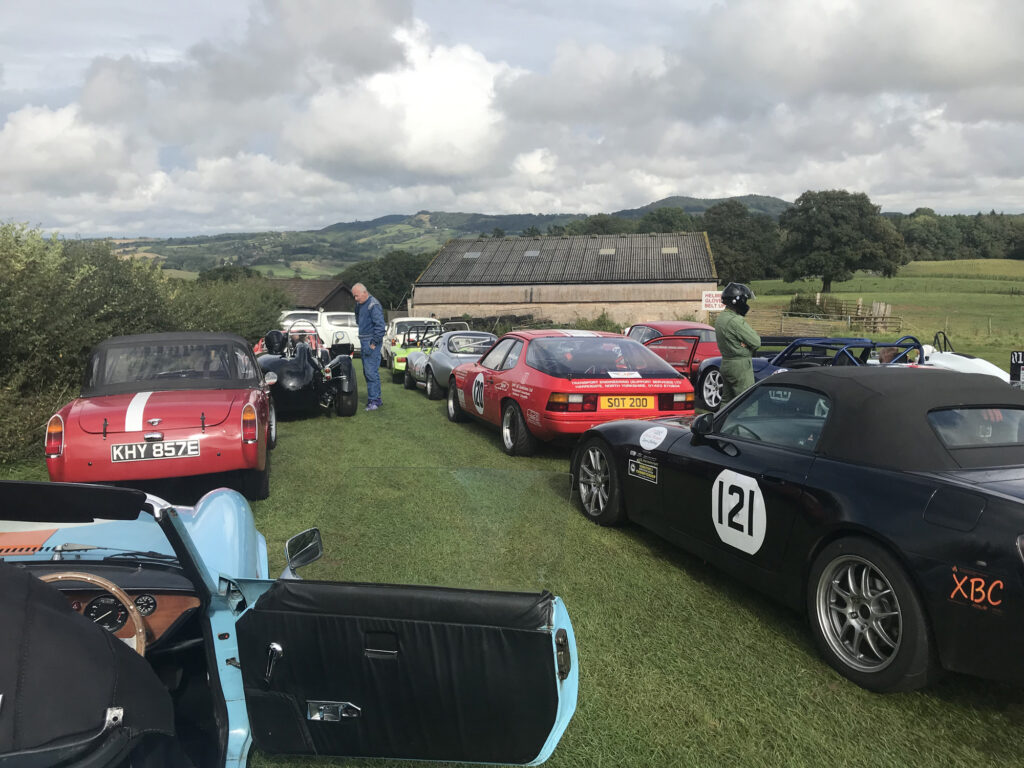
The way in which you find out your run time can vary by event, but in any case provisional times should be available on the day and may include some of these methods: Web site with live timing results (these can normally be referred back to at a later date); an electronic scoreboard at the end of the run (also can have additional electronic scoreboards for spectators to view); a PC that will give a hard printed copy (often self-service but sometimes you have to ask).
It’s worth noting that your own club/championship will often have their own way of determining the scoring system so your official results may often follow later and may be distributed by your club or be available to view on relevant web sites.
What to do next:
Every answer can always be found in the MSUK Yearbook (often referred to as ‘The Blue Book’). By necessity this covers every aspect of every type of motor sport discipline so can be daunting to read, so we have worked really hard to not give too much information in this report as it is only intended to give you an understanding of how easy it is to get involved using your existing ‘daily drive’; then you can follow up to gain the answers to the questions that are specific to your situation.
We can also recommend viewing some of the video reports on our YouTube channel as they often include some of the procedural details outlined in this report.
Links:
Race numbers and other stickers

